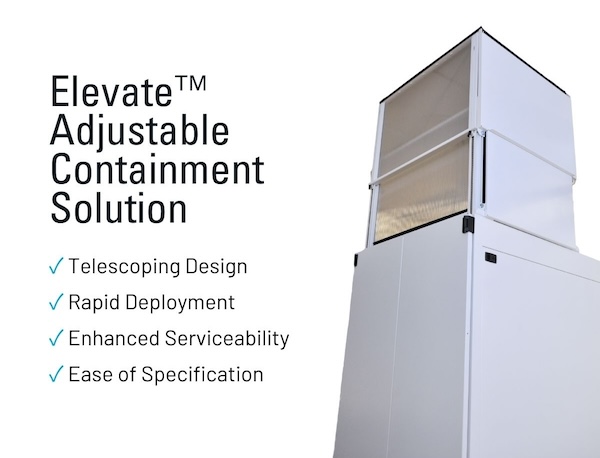In a world with more than 7.6 billion people, organizations wield significant influence in shaping a sustainable future that next generations can depend on.
Data center customers and stakeholders are increasingly demanding accountability regarding climate impact, prompting the data center industry to take action.
Hyperscale and cloud data centers have been leading the charge. Leveraging their vast scale, they’ve forged partnerships with renewable energy providers, simplifying infrastructure and reducing both capital and operational expenses (CAPEX and OPEX).
But what about the smaller, on-premises data centers that make up most of the industry? It’s equally important to improve waste and inefficiencies in smaller, legacy data centers and telecommunications rooms.
Here are three simple ways to fast-track a move toward sustainability:
Consolidate and Decommission Unused Servers
Even in the world of data centers, the adage "you can't manage what you can't measure" rings true. Without knowing where energy waste is happening, it’s impossible to stop it.
As data centers strive to meet the rising demand for computing power, especially with more people working remotely, many are transitioning their servers to the cloud. But with this migration, some servers are left running even though they aren’t needed—which can cost millions in energy bills and strain resources.
To tackle this issue, data center managers can employ a combination of intelligent power distribution units (PDUs) and Data Center Infrastructure Management (DCIM) software to closely monitoring data center power and ultimately reduce costs and energy consumption.
How intelligent PDUs contribute to sustainability:
-
Equipment Utilization: Monitoring voltage, power, and current at the outlet level helps managers identify energy usage patterns.
-
Monitor Equipment Conditions: Hot spots within cabinets are a common cause of equipment downtime. And temperature levels within the white space have a strong correlation to overall energy consumption within the data center. Being able to measure and track inlet and outlet temperature levels at the rack level can help identify where the ghost server “lives.”
-
Real-Time Alerts: Immediate notifications flag unnecessary server activity, enabling quick responses to manage energy consumption and prevent overheating.
-
Minimize Power Consumption: Remote outlet control allows unused outlets to be turned off, optimizing power management at the rack level.
-
Predictive power management: Analytics and machine learning analyze historical data to understand usage patterns and aid future capacity planning.
-
Cabinet Integration: Intelligent devices can seamlessly integrate with other data center components, such cabinets, and cooling systems, to provide comprehensive insights into factors affecting power usage.
Streamline the Supply Chain
In a world where every second counts—efficiency isn't just about individual components; it's about how they work together. Whether it's simplifying logistics, saving time, or minimizing waste, a finely tuned supply chain unlocks sustainability opportunities.
Managing multiple vendors and disparate components can lead to delays, extra costs, and inefficiencies. Poorly integrated systems may cause suboptimal airflow management and increased energy consumption for cooling, resulting in a larger carbon footprint.
When selecting an ICT supplier, prioritize those offering preinstallation and hardware/software integration within data center cabinets.
Contrary to common belief, integrated cabinets can reduce operational costs over the long term and are not necessarily more complex than piecing together individual components.
A well-integrated cabinet ecosystem:
-
Holistically integrates power, cooling, and cable management and ensures resources are optimized to their fullest potential
-
Delivers long-term savings through enhanced efficiency as well as reduced maintenance and operational costs
-
Provides flexibility through modular designs and customization options
Reduce Cooling Costs with “Free Cooling” and Aisle Containment
Data center cooling accounts for 30% to 50% of total energy consumption, which means that optimizing cooling systems presents one of the most significant opportunities for eco-friendly operations.
Aisle containment is a cornerstone strategy for highly efficient data center cooling. It involves using physical barriers, such as enclosures or partitions, to isolate, redirect, and recycle hot exhaust air, preventing it from mixing with cool air. This airflow management approach maintains temperature control without the need for active cooling mechanisms like fans or refrigeration units.
The concept of "free cooling" is closely tied to aisle containment. When outdoor temperatures are favorable, free cooling uses economizers to bypass the chillers and introduces outdoor air into the building, providing "free" cooling without the need for mechanical refrigeration. While, “free cooling” is not entirely cost-free, economizers generally cost less to operate than chillers.
The efficiency of "free cooling" systems is further enhanced when using aisle containment to prevent the mixing of cooled and warm air, making the cooling process more efficient overall.
By integrating airflow containment with “free cooling” systems, data centers can see significant energy savings and improved environmental sustainability.
As a steadfast advocate for environmental sustainability and leader in efficient cooling solutions, we proudly introduce our new Adjustable Aisle Containment Solution for the ZetaFrame® Cabinet System, featuring:
-
Telescoping design seamlessly adapts to meet various installation requirements.
-
Ease of Specification with panels that align with standard ZetaFrame cabinet widths.
-
Pre-assembled panels significantly reduce setup time and labor costs.
-
Enhanced Serviceability with sliding service panels that provide easy access to the cabling infrastructure and other overhead structures.
Learn more about this innovative solution!
